Abstract
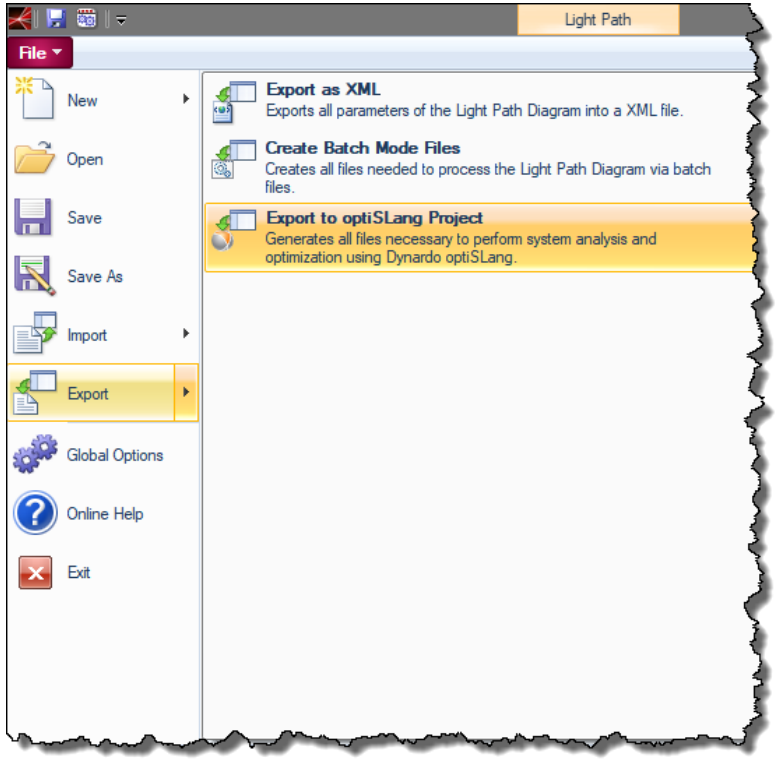
Optimization of a modern optical system often involves a large amount of parameters. As an example, for the optimization of gratings, not only the geometrical paramters of the grating shall be considered, but also the desired incidence directions. That leads to a challenging task with greatly increased number of parameters. For such cases, VirtualLab Fusion provides an interface to the software optiSLang from Dynardo, so that different advanced optimization algorithms can be applied.
Interface of VirtualLab Fusion and optiSLang
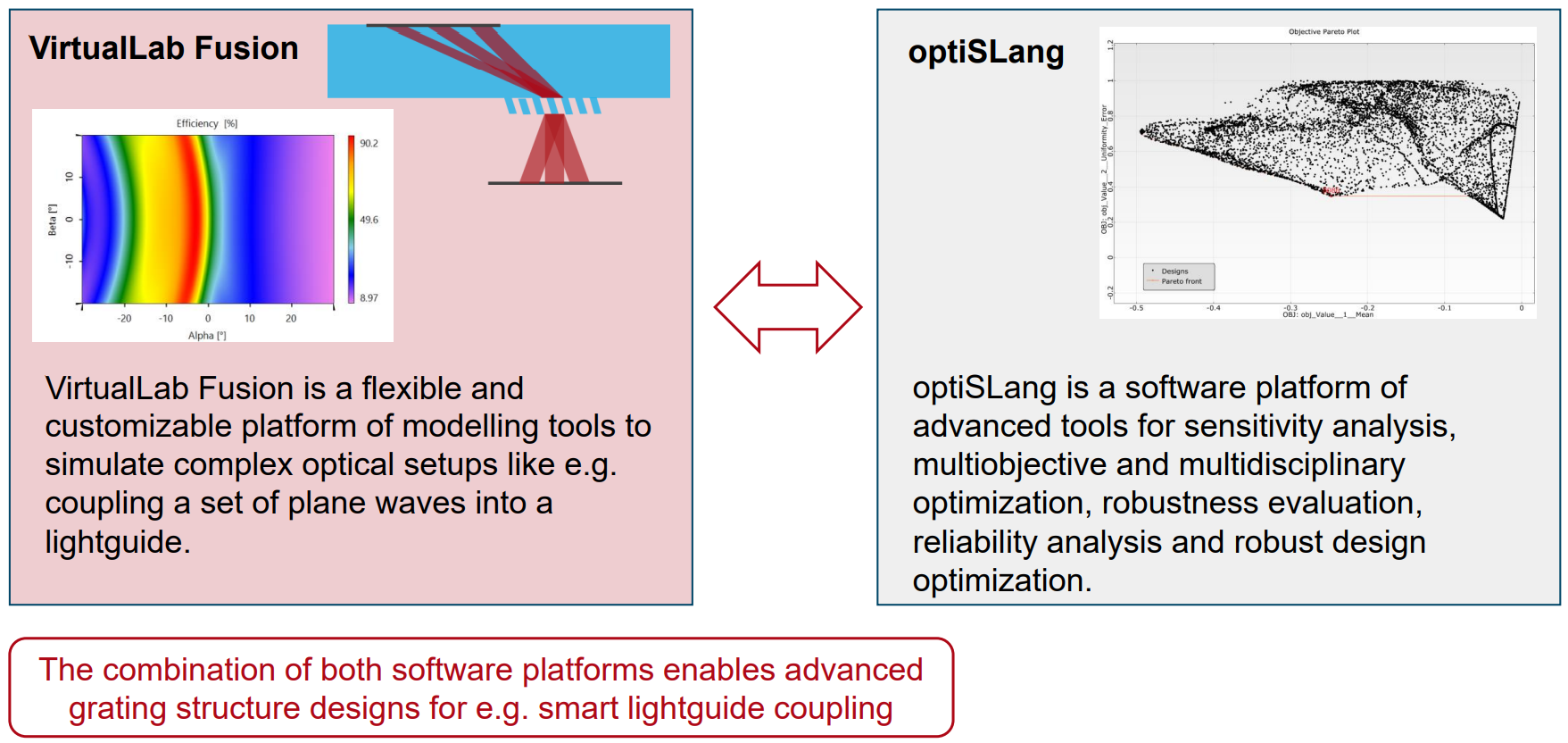 VirtualLab Fusion – Initialization of the Optical Setup
VirtualLab Fusion – Initialization of the Optical Setup
Initial Setup
− In general, each optical system defined in VirtualLab can be optimized using optiSLang.
− For this example the optical system consists of a Plane Wave Source and the Lightguide Coupling Detector for periodic media.
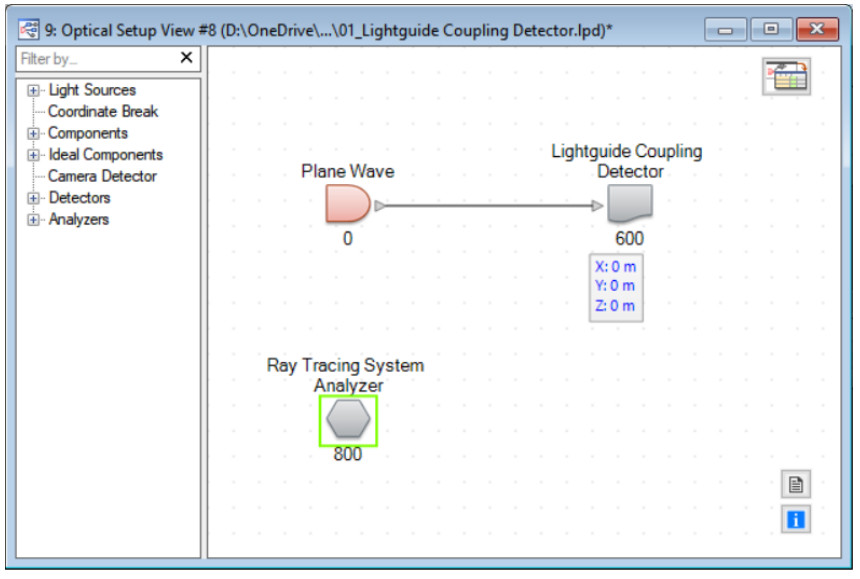
Lightguide Coupling Detection
− The Lightguide Coupling Detector is a special tool to detect the efficiencies of a periodic structure regarding a specified angular incidence range.
− The periodic structure can be defined or loaded from catalogs within the Edit Dialog of the detector.
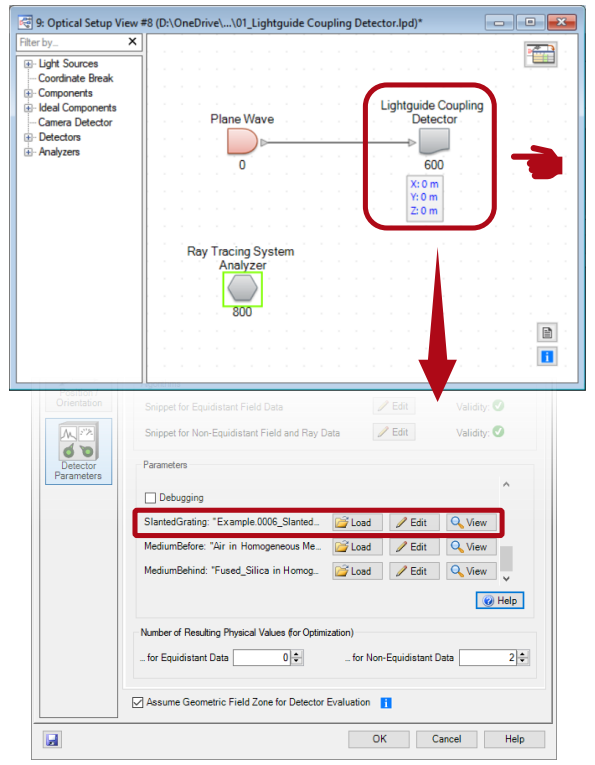
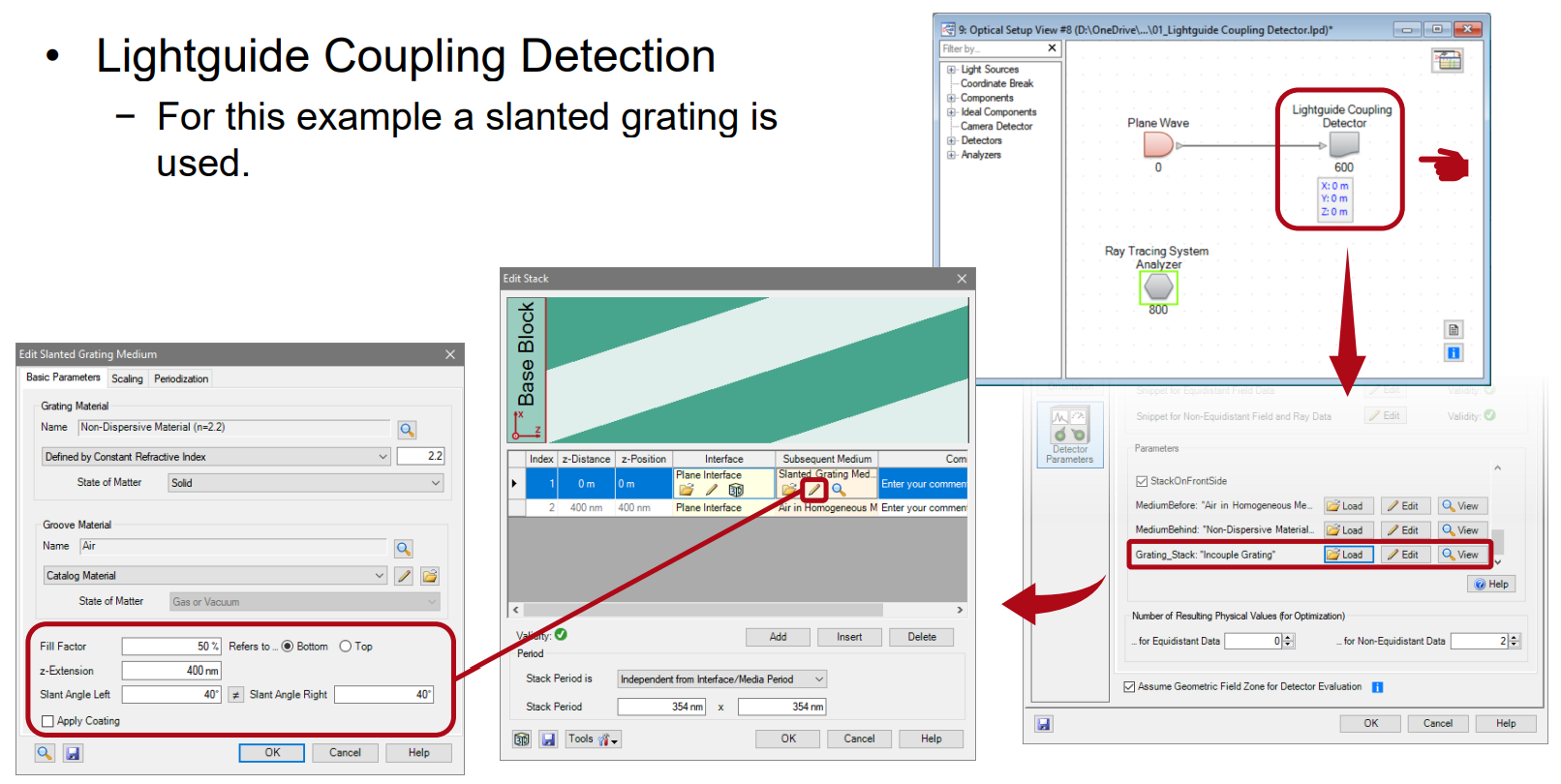
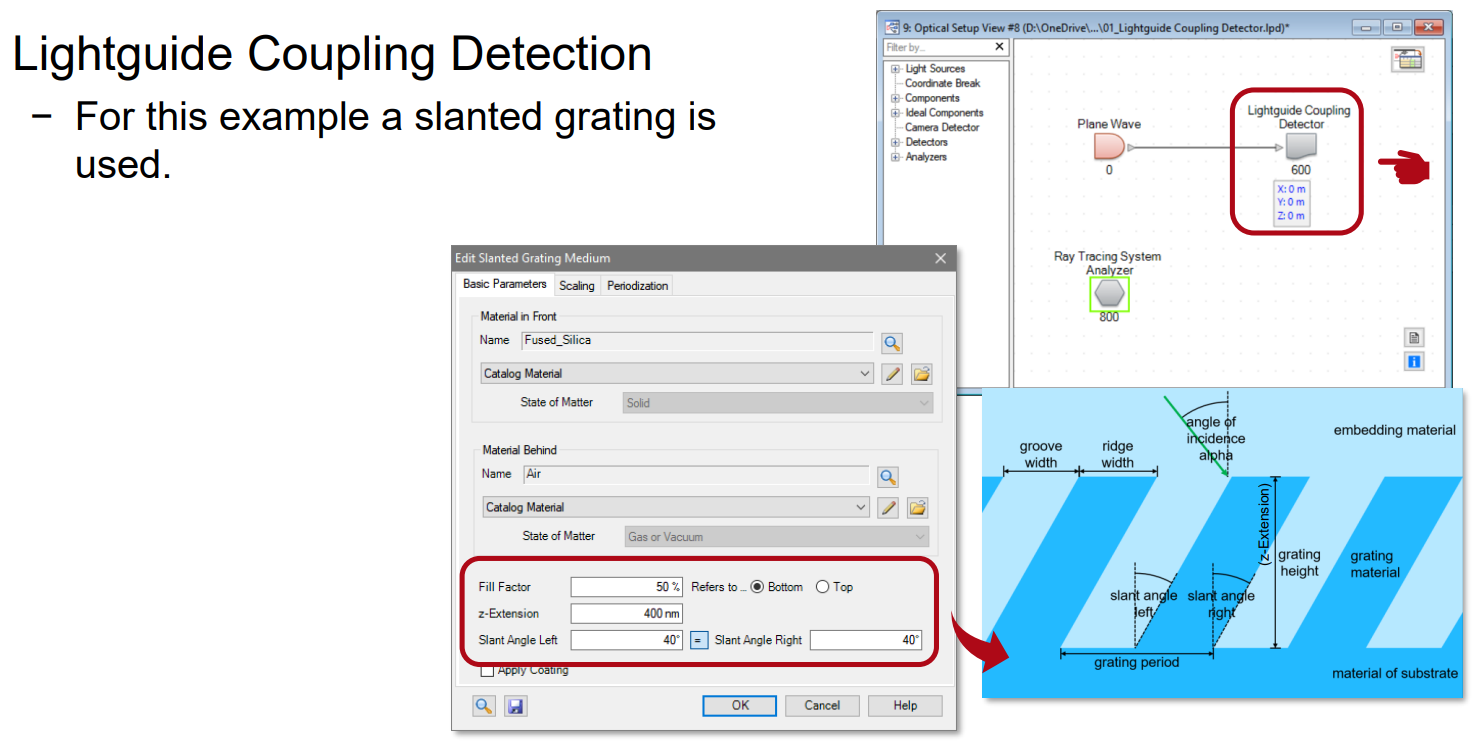
Lightguide Coupling Detection
− The angular range of the incidence directions of the input source is specified within the Edit Dialog of the detector.
− These are defined by minimum and maximum cartesian angles alpha and beta and their number of sampling points.
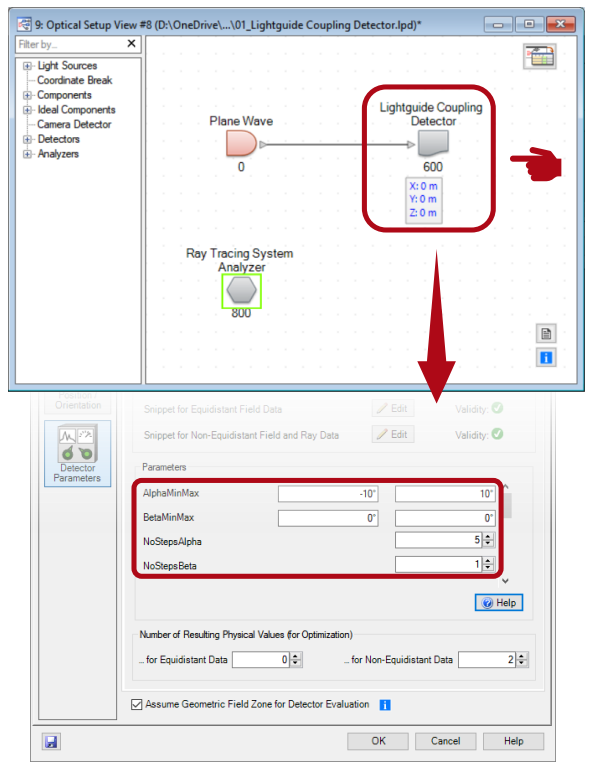
VirtualLab Fusion – Lightguide Coupling
Lightguide Coupling Detection
− From the detected efficiencies, the mean value and the uniformity contrast is calculated and provided in the Detector Results tab.
|

